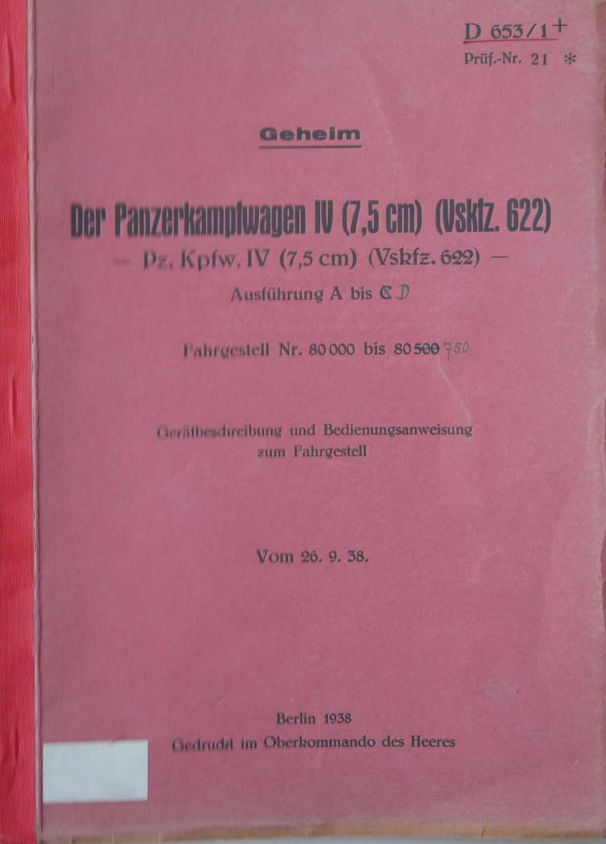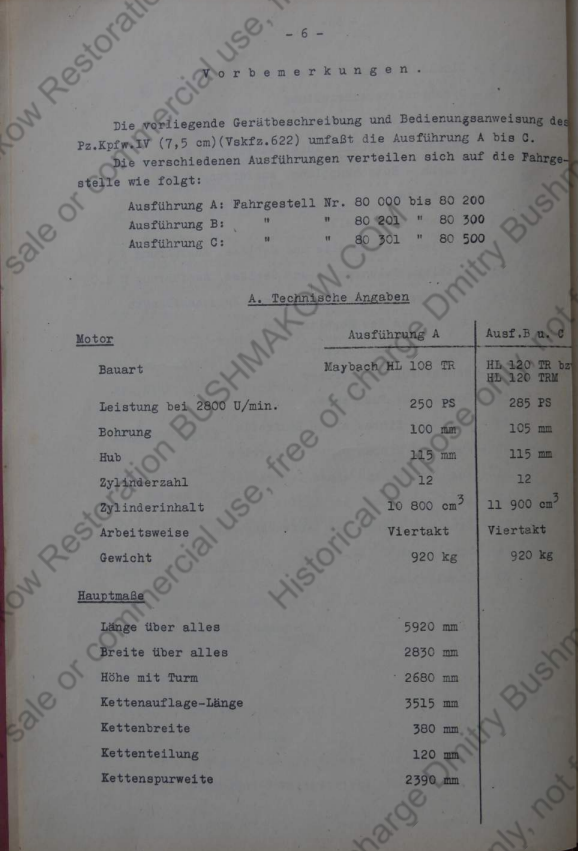Tho this topic wasnt so much so to see what the top is, but to clear some confusion, as i now have seen 3 sources, where they mixed up the RPM. Another sources i found (primary german that is) also has 2600 RPM 285 Ps.
Where i also came to the conclusion, that some other german engines are also at Dauerleistung and not at Höchstleistung in game.
I will say though, the horsepower values don’t really make any sense.
To get a good idea, horsepower is just RPM × torque (at that RPM). This means that engines have two peaks: peak torque and peak horsepower, which happen at completely different RPMs.
We can get an idea of how the torque increases and decreases by taking the horsepower and dividing by the respective RPM. So:
- 265 ÷ 2600 = 0.1019
- 285 ÷ 2800 = 0.1018 (or 272 ÷ 2800 = 0.0971)
- 300 ÷ 3000 = 0.1
- 320 ÷ 3200 = 0.1
Since the highest “torque” value out of all of these is achieved at 2600 RPM, it is very safe to say that peak torque is achieved somewhere below (or at) 2600 RPM. Therefore, from that point on, torque decreases.
That makes the 3000 and 3200 RPM figures not make sense. They are equal, which simply does not match any gasoline engine figures I have ever seen. They make even less sense with the 272 PS figure, since it would mean torque increases from 2800 to 3000 RPM (again, to my knowledge it should only decrease, at least in engines like these)
1 Like
Sry, i have no idea about engines that much. Tho i also saw 320 PS at 3000 RPM. Once again the values are a bit over the place and it might be that they for the documents started to simply smooth the numbers, in general.

This is from TM 9-1731B which is a technical manual specifically for the Ford GAA.
You can see the torque and horsepower lines, and you can also see that, despite torque decreasing past a certain point, the horsepower still increases (even thought horsepower is torque × RPM, the increase in RPM is sufficient to compensate for the decreasing torque).
Point is: once peak torque RPM is reached, torque only goes lower as RPM increases. However the figures you have given show torque staying the same even after peak torque has been reached (do notice that in the graph I have shown torque starts declining faster with higher RPM, so it’s even weirder that at such a high RPM the German engine would output even similar torque values).
So they make me skeptical.
2 Likes
So you are saying, they should have more HP at 3000 and 3200 RPM?
The exact opposite.
If 272 PS is correct, then the 300 and 320 PS values are senseless. They would require torque to go up past 2800 RPM when at that point it is going down.
But even if 272 PS is wrong and it is actually 285 PS, the 300 and 320 PS values are still inconsistent, since they show the same torque value between 3000 and 3200 RPM, when again, it should be going down. In fact, the drop in torque between 3000 and 3200 RPM should be larger than the one between 2600 and 2800, or 2800 and 3000, since torque decreases faster as RPM increases.
So either 300 and 320 PS are wrong and should be lower (if 272 PS is correct), or 320 PS is wrong and should be lower (still higher than 300, probably).
1 Like
Think of it like this: after 2600 RPM, the increase in horsepower should become slower and slower with higher RPM.
From 2600 to 2800 RPM, we go from 265 to 272 PS, an increase of 7 PS. Now, from 2800 to 3000 RPM, we go from 272 to 300 PS, which is an increase in 28 PS, which doesn’t make any sense given the previous 7 PS increase.
So let’s discard 272 PS, and go with 285 PS.
So, at 2600 to 2800 RPM, we go from 265 to 285 PS, which is an increase in 20 PS.
Then, from 2800 to 3000 RPM, we go from 285 to 300 PS, which is 15 PS. So far, makes sense.
Then from 3000 to 3200 RPM, we go from 300 to 320 PS. The increase is 20 PS. Completely inconsistent.
So, potentially 3200 RPM 310-315 PS or so?
That seems more probable, but there’s doesn’t seem to be any documentation for 310-315 PS.
Actually, i just noticed, the 3200 RPM is from my memory, but i dont even find the 3200 RPM number anymore, just 320 PS in general. Could it be 320 PS at 3000 RPM (like 2 books say)? Or at what RPM 320 PS?
320 PS at 3000 RPM would be… a bit ridiculous with the other values in mind. It would contradict with the other stated figures more than the slight discrepancies I’ve already mentioned.
For example, the figures you have say 300 and 320 PS at 3000 and 3200 RPM, which already isn’t super realistic because that means at these two RPMs the torque is the same when we know it should be lower at 3200 RPM.
With 320 PS at 3000 RPM the horsepower increases from 2800 to 3000, even though it should decrease, and it is not a small increase either. The torque at 2600 RPM, assuming a 265 PS value, is 0.13% higher than the torque at 2800 RPM with 285 PS. Meanwhile, the torque at 3000 RPM with 320 PS would be 4.65% higher than the torque at 2600 RPM.
1 Like
So 320 PS at something like 3300-3400 RPM seems realistic? Because i have seen 2 books and the 2 German Docs, but no RPM given.
I’ve quickly plotted this graph which shows how the torque “curve” would look like with the different RPMs for the 320 PS value. Red is at 3200 RPM, blue is your suggested 3300 and green is 3400 (keep in mind, the Y-axis is not showing actual torque values, since PS/horsepower is torque * RPM * a specific constant, and that constant doesn’t really matter for this point).
Both green and blue seem like plausible curves, at least more than 320 PS being at 3200 RPM. Only time will tell I guess, hopefully with the Pz.IV related document. Even just knowing the peak torque RPM would be helpful.
It should also be noted that you should look into what RPM is used for the top speed of vehicles. With exception to the electric drives of the Ferdinands, engine RPM is directly related to the top speed, since the speed of the sprocket is literally just the engine RPM multiplied by all the gear ratios of the tank.
What this means is that an increase in RPM could lead to an increase in top speed, if the top speed in the documents is written at 3000 RPM.
Top speed is with 2800 RPM with the Pz III, i dont know for the Pz IV, however with Pz III its just sayed with the last 2 gears to not go over 40 km/h and use it as Schongänge (Low Wear Gears). I assume its with the Pz IV similar. So the RPM to top speed in game is wrong anyway.
Spoiler

Found a new source: 2800 RPM / 285 PS (HL 120) and 250 PS (HL 108)
RPM for the speeds is not given, however cince 2800 RPM is given as the number at the top, i assume they chose it, for the specific gear speeds.
For Pz IV Ausf.A-D

Here written, the Transmission of the A is made for an engine with 300 PS, full power.


1 Like
So, could with the known gearing the top speeds be calculated based on an extended RPM of 3300 RPM for the Pz III and IV (except the H and J, since they possibly recived new lower gearing, which i dont know iirc.)?
The StuG III and StuH 42 are also currently limited to the soft road speed of 40 km/h which was just to lower wear and not even governed.
Overall iirc the top speeds for the Pz IV and more in game are for 2800 RPM, while the engine in game is already working at 3000 RPM constantly.
If you can prove it that the top speeds are for 2800 RPM, yes. And the math is fairly simple too, all you have to is this:
Current\ top\ speed\times\frac{Maximum\ RPM}{2800}
1 Like
Ty, so the Pz III Ausf.B Top speed would increase from 35,2 km/h at 2800 RPM to 41,5 km/h at 3300 RPM.
Pz III Ausf.E and F are at 71 km/h, which is for 3000 RPM, and with 3300 RPM to 79,04 km/h, with originally 67,07 km/h at 2800 RPM.
Pz III Ausf.J - N are at 53 km/h, which i dont know, is there another way for calculating, without the top speed, as the highes given speed is simply 40 km/h, which isnt the top speed either way. Otherwise still taking the 40 km/h its 47,15 km/h. With 53 km/h, its 62,46 km/h but that sounds unrealisitic, since its the SSG 77, which is practically a SSG 76 form the Pz IV. However different final drives…
Or turning around the numbers 53*2800/3000=49,46 km/h, which taken as base then goes to 58,29 km/h
For Pz IV Ausf.C - F2 it will be 49,5 km/h.
G 47,14 km/h
H and J 45,96 km/h
Same will apply to StuG III and StuH 42 and Jagdpanzer IV and such.
And the 8,8 cm Flak 37 Sfl. which uses the same HL 108 engine goes from 40 km/h 2600 RPM to 50 km/h, which is even suppored by the
Sd.Kfz.9 data sheet.







